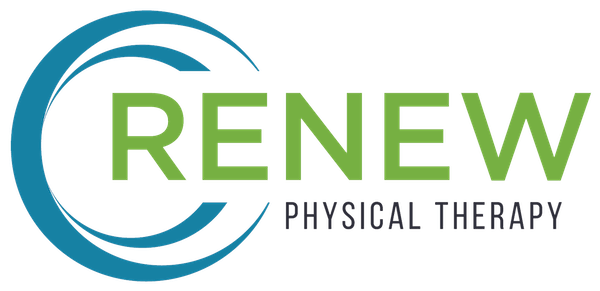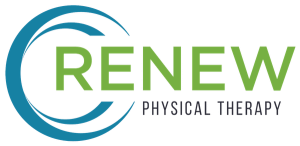Manual therapy treatments can improve joint motion and tissue mobility and reduce pain. When it comes to hands-on or manual therapy, Renew therapists have large “toolboxes” full of diagnostic skills and treatment techniques to pull from.
Renew therapists with OCS (Orthopedic Clinical Specialist) or CMPT (Certified Manual Physical Therapist) on their name tags have taken extensive diagnostic and manual treatment courses and are APTA board-certified therapists. These therapists are trained to perform thrust mobilizations to restricted and painful joints to improve mobility and restore functional strength. Thrust treatments involve a short, painless rapid passive thrust to a joint at its end range of motion. All Renew physical therapists perform non-thrust mobilizations. These are slow and controlled therapist-assisted movements to a joint. Non-thrust mobilizations are equally effective and gentle to most injured joints.
PTs use another manual technique called muscle energy (MET). MET is an active technique in which the therapist positions a patient and then asks the patient to contract her muscles against a counterforce supplied by the therapist. MET is used to lengthen shortened or spastic muscles, to strengthen weakened muscles, to reduce localized edema, or to mobilize restricted joint motion.
Other therapists use a gentle but effective technique called Strain/Counterstrain, first developed in 1955 by Dr. Lawrence Jones, an osteopath and native of Washington. The ever-evolving method uses diagnostic tender points to identify painfully guarded and contracted tissues that occur in response to various chemical or mechanical insults, including trauma, surgery, viral or bacterial infections, and inflammation. With Counterstrain, the therapist positions the patient’s body away from the painful, restricted directions of motion with a process of slackening and decompressing the involved structures.
The treatments are completely painless, making them a viable option for even the most painful and complex cases. Counterstrain is often effective and long-lasting because it deactivates deep fascial pain receptors called nociceptors, maintaining the body’s soft tissues in a persistent guarded state. It works when other treatments do not because it normalizes blood flow, muscular tension, vascular drainage, and neural input, thereby maximizing the body’s intrinsic healing capacity.
Manual therapy is typically used to treat trauma to soft tissue, such as strained or restricted muscles, fascia, and ligaments. Renew therapists are trained to identify and treat myofascial restrictions. Our fascia is a web of connective tissue that spreads throughout the body and surrounds every muscle, bone, nerve, blood vessel, and organ to the cellular level. It is a continuous- three-layer system, running from the bottom of the feet through the top of the head. When fascia is in its normal healthy state, it is a relaxed and supple web. When it is restricted, it is more rigid and less pliable and can create pulls, tensions, pressure, and pain. These restrictions caused by trauma, posture misalignment, or inflammation are not seen on MRIs or x-rays but can create significant pain.
Myofascial release therapy or myofascial trigger point therapy is a type of safe, low load stretch that releases tightness and pain throughout the body caused by chronic muscle pain that is worse in certain areas known as trigger points.
Soft tissue and fascial injuries are also treated using Graston tools. Graston instruments are steel and come in different sizes with convex and concave shapes. A therapist, for example, can use a Graston tool to break up scarring after an Achilles tendon repair. They are another effective to identify and treat muscle strains, support ligament repairs, break up scar tissue and fascial restrictions.
Renew treatments begin with a thorough diagnostic evaluation and often include manual therapy. Mentioned here are just a few of the hands-on approaches your therapist will choose from. Others include Proprioceptive Neuromuscular Facilitation (PNF) and PRI, a postural restoration diagnostic and training technique from the Postural Restoration Institute. Manual therapy is just one part of your Renew experience. Your therapist will progress you at your pace using their heads and their hands to get you back to your life.

